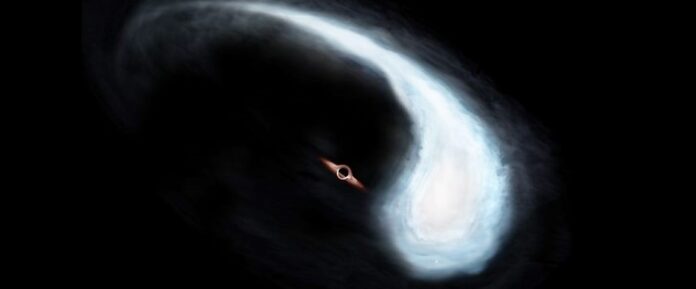Exploring the Black Hole Spectrum
An astounding discovery has been made by astronomers who have found a comma-shaped molecular cloud, known as the Tadpole, near the center of the Milky Way galaxy, which suggests the presence of an intermediate-mass black hole. This black hole belongs to a rare type and could be the “missing link” between two known types of black holes.
Unveiling New Insights in Astronomy
The discovery of this intermediate-mass black hole opens up a new spectrum of investigation into black holes in the universe. Black holes are typically classified into two categories based on their mass, stellar-mass black holes with masses up to 100 times that of the Sun and supermassive black holes with masses ranging from millions to billions of times that of the Sun. Intermediate-mass black holes serve as a significant finding as they provide evidence that black holes exist in the whole spectrum of masses, and these intermediate-mass black holes could signify a stage of growth between stellar-mass and supermassive black holes.
The Hunt for Intermediate-Mass Black Holes
Detecting intermediate-mass black holes has been an arduous task since they do not emit light on their own. Their existence can only be perceived by observing their immense gravity’s impact on their surroundings, such as swirling matter or an effect on the orbital dance of distant objects. The Tadpole’s discovery is particularly notable as the galactic center, where this black hole was found, is an intricately packed region of the Milky Way, making it strenuous to examine what is inside.
The Discovery of Tadpole with the James Clerk Maxwell Telescope
Astronomers made this groundbreaking discovery using the James Clerk Maxwell Telescope to look for gas perturbed by gravity. The Tadpole’s elongated shape proposes that it was pulled by a strong gravitational interaction, most likely caused by an intermediate-mass black hole with a mass of approximately 100,000 times that of the Sun.
Prospects for Future Research
To confirm their suspicions, the team plans to conduct additional observations of the Tadpole using the Atacama Large Millimeter/submillimeter Array in Chile. If the Tadpole does turn out to be an intermediate-mass black hole, it could aid astronomers in comprehending how supermassive black holes at the centers of galaxies form and grow to such enormous sizes.
Final Thoughts
The discovery of an intermediate-mass black hole near the center of the Milky Way galaxy is a momentous accomplishment in the domain of astronomy. This breakthrough finding could potentially unveil crucial insights into the formation and growth of supermassive black holes, which are still a mystery to astronomers. As astronomers continue to explore black holes, it is likely that we will continue to uncover more mysteries about these captivating cosmic phenomena.














